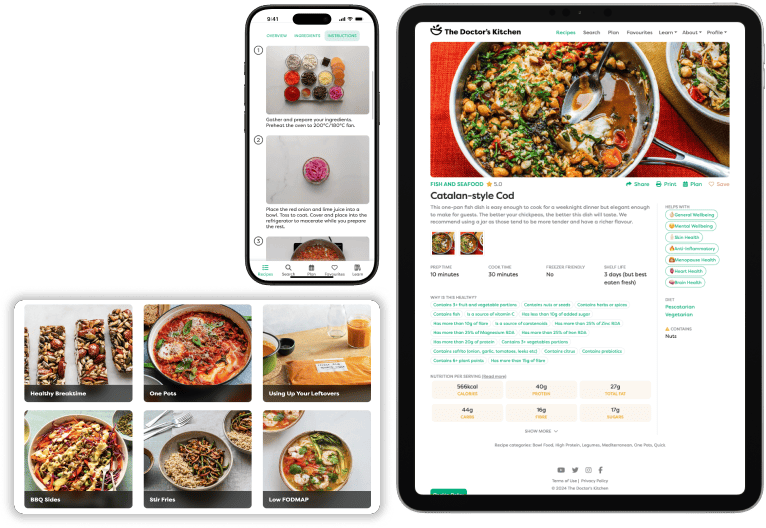Cranberries benefits
21st Nov 2024
Cranberries are a winter favourite for their vitamin C, fibre and anthocyanins with anti-inflammatory benefits. Add them to porridge, salads or roasted vegetables.
Key points
Source of
- Fibre ~3-4g per 100g
- Vitamins C, E and manganese
- Anthocyanins – Plant pigments that give berries their colour and health properties, including antioxidant and anti-inflammatory. Cranberries, blueberries and blackcurrants are some of the best sources, with 100–200 mg per 100g.
- Proanthocyanidins (PACs) – Key ‘active’ compounds that may help block bacteria like E. coli from sticking to the urinary tract, potentially preventing infections.
Health Benefits
Eating cranberries and other berries regularly is tied to:
- 🫀 Lower heart disease risk – A higher intake of anthocyanins is tied to a 17% lower risk of coronary heart disease.
- 🩸 Better cholesterol – In human trials, supplementing with anthocyanin-rich berries lowers total cholesterol.
- 🧠 Sharper memory – Just one small cup of cranberries daily improved memory in older adults, possibly by increasing blood flow to key brain areas.
- 🦠 Gut health – The combination of polyphenols and prebiotic fibres “feed” gut bacteria producing short-chain fatty acids that strengthen the gut barrier and reduce inflammation.
Can cranberries help with UTIs? Studies show that cranberry products, like capsules or tablets, can lower the risk of UTIs by about 26% in those who get infections often. The challenge is that cranberry products aren’t standardised—different types, doses and levels of proanthocyanidins (PACs) are used in studies, making it unclear which works best.
Dried, fresh or juice?
- Juice – Some studies use cranberry juice as it can be a concentrated source of proanthocyanidins (PACs) and other polyphenols. But it often contains added sugar and loses all its fibre.
- Dried cranberries – Convenient, but they often contain added sugar and sunflower oil, so check the label.
- Fresh or frozen – Our top pick! They preserve their fibre and polyphenols, which lowers blood sugar levels and provide the most health benefits.
How to enjoy
Cranberries have a bold, tart flavour that’s perfect for balancing rich or sweet dishes.
- Salad dressing – Simmer frozen cranberries with a splash of water, then blend with lemon juice, mustard, olive oil and seasoning for a vibrant, tangy dressing.
- Oats – Stir in a handful in overnight oats with seeds, chopped nuts and yoghurt.
- Roasted vegetables – Toss cranberries into the roasting pan for the last 10 minutes to add a tangy contrast to butternut squash, Brussels sprouts or parsnips.
- Access over 1000 research backed recipes
- Personalise food for your unique health needs
